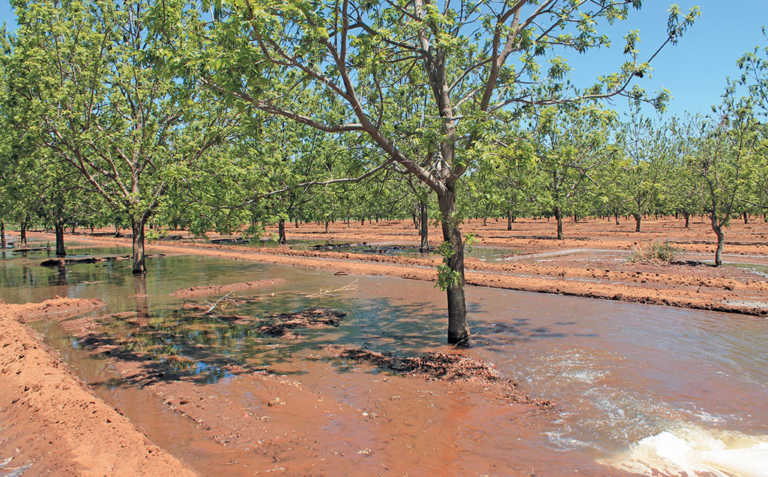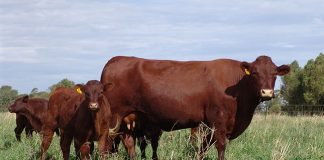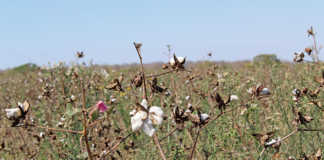
The pecan nut tree grows and produces best in fertile, well-drained and deep soil with a loose to medium texture.
Scab is a fungal disease that can spread rapidly in areas with high summer rainfall and humidity. The cultivars Moore (Bester), Barton, Ukulinga, and Shoshoni are resistant to scab.
Soil preparation
Examine the soil in terms of depth, drainage and compaction layers. The soil should be at least 2m deep, with good drainage and minimum compaction. Check its suitability by digging test pits in the land and examining the soil profile at each level.
Take a representative sample of the soil for analysis at least 12 months before planting. This allows time to prepare the soil, particularly if it must be well limed.
If this is the case, distribute two-thirds of the recommended amount of agricultural lime over the entire area 12 months before planting.
Incorporate the lime into the topsoil by disking and then ploughing it in as deeply as possible.
As calcium (lime) moves very slowly in the soil, work it into the future root zone of the trees.
Plant a cover crop and plough it in after six months to boost the soil’s organic matter content.
At the same time, apply the remaining lime and all the required phosphate, and work it into the soil. Plant the trees three months later.
If soil samples were not taken early enough to treat the soil as described above, mix two-thirds of the lime with the soil by ploughing it in deeply. Then lightly distribute the rest of the lime with the phosphate and work it in lightly.
If the soil requires a large quantity of lime, apply this at least three months before planting, thoroughly mix it with the soil and work it in deeply.
Planting
The pecan nut tree is deciduous and can be transplanted only in winter. When establishing an orchard, do so in July and August. The tree has a long, strong tap root system.
Trim each tap root to a length of 1m with a sharp spade. Then carefully remove the young trees from the soil in the nursery bags and put them in a shed or shady place.
Cover the roots with wet sawdust or other suitable damp material to keep them moist. Inspect the young trees carefully and discard those with bent roots.
Holes and planting depth
When transplanting the young trees into the orchard, ensure that the holes are deeper than 1m, or at least 200mm deeper than the length of the tap root.
Plant each tree at exactly the same depth as it was in the nursery bag. Planting it too shallow will expose the root collar to the sun, causing sunburn and eventually die-back or stunted growth.
Replace some of the loose soil to bury the cut tip of the tap root and encourage it to grow downwards during the first season of establishment. Add well-rotted compost to the hole.Apply 500g zinc (Zn) fertiliser (22% Zn) mixed well with the topsoil to each planting hole.
Do not apply additional fertiliser at planting.
Source: ‘Cultivating pecan nuts’, compiled by Directorate Communication, department of agriculture, in co-operation with the ARC-Institute for Tropical and Subtropical Crops.










